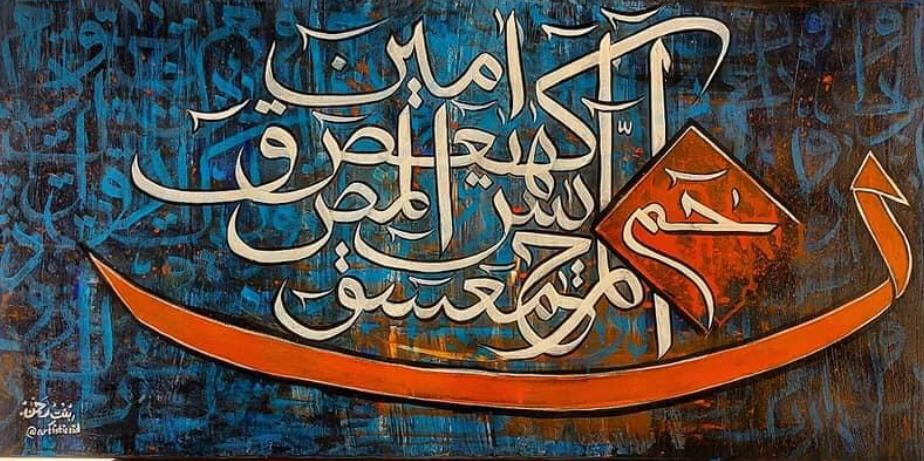In the realm of Islamic spirituality, the term “Lohe Qurani Ka Matlab” holds significant importance. Translating to “Metallic Quran” in English, this practice involves inscribing specific verses from the Quran onto metal, often copper or silver. In this detailed guide, we will explore the meaning, significance, and practical aspects of “Lohe Qurani,” shedding light on its relevance in the lives of believers.
“Lohe Qurani” is a combination of two words: “Lohe,” which means metal, and “Qurani,” referring to the Quran, the holy book of Islam. Therefore, “Lohe Qurani” essentially translates to “Metallic Quran” or “Quran on Metal.” This practice involves engraving selected verses from the Quran onto metal plates, creating sacred artifacts believed to carry divine blessings and protective qualities.
Table of Contents
Significance of “Lohe Qurani”:

- Tangible Connection to the Divine:
- Protection and Healing:
- Display of Faith:
- Symbol of Blessings:
Tangible Connection to the Divine:
The act of inscribing Quranic verses on metal is seen as a tangible representation of a believer’s connection to the divine. The metal becomes a physical conduit for the spiritual messages contained within the Quran. You may be interested in this also: Lohe Qurani Ayat
Protection and Healing:
“Lohe Qurani” is often associated with seeking protection and healing. The selected verses are chosen for their perceived ability to ward off negative energies and bring about physical and spiritual well-being.
Display of Faith:
Creating and displaying “Lohe Qurani” is considered a visible manifestation of one’s faith. Many individuals hang these metal plates in their homes or wear them as jewelry, expressing a commitment to Islamic teachings.
Symbol of Blessings:
The engraved metal is believed to symbolize blessings for the individual and their surroundings. It is considered a source of positive energy that radiates through the space where it is displayed.
Practical Aspects of “Lohe Qurani”:
- Selection of Verses:
- Metal Choices:
- Craftsmanship:
Selection of Verses:
Choosing the right verses for inscription is a crucial aspect of the “Lohe Qurani” practice. Verses that emphasize protection, healing, and blessings are commonly selected for this purpose.
Metal Choices:
While copper and silver are popular choices for engraving, the type of metal used can vary. Some individuals prefer specific metals based on cultural or personal preferences.
Craftsmanship:
The process of engraving the Quranic verses onto the metal requires skilled craftsmanship. This task is often entrusted to experienced artisans who ensure precision and accuracy in reproducing the sacred text.
Meaning of Lohe Qurani:
Begin by explaining the literal translation of “Lohe Qurani” and its significance in the context of Islamic practices. This sets the foundation for a comprehensive exploration. Dive into the deeper meaning behind the practice, exploring the beliefs associated with “Lohe Qurani” and its role in the spiritual lives of believers. Provide practical insights into incorporating “Lohe Qurani” into daily life. This can include wearing it as an amulet, displaying it at home, or gifting it as a symbol of goodwill.
FAQs For Lohe Qurani Ka Matlab
Can anyone inscribe verses on metal for “Lohe Qurani”?
While the practice is open to believers, it is advisable to consult knowledgeable individuals or religious scholars to ensure the selected verses align with Islamic teachings.
Is there a specific metal recommended for “Lohe Qurani”?
While copper and silver are common choices, there is no strict rule regarding the metal type. Personal preferences and cultural considerations may influence the selection.
How often should one recite the verses inscribed on “Lohe Qurani”?
There is no set frequency, but regular recitation, especially during times of reflection or difficulty, is encouraged.
Conclusion:
In conclusion, “Lohe Qurani” goes beyond a mere metal engraving; it represents a bridge between the material and spiritual realms. Understanding its meaning, significance, and practical aspects enriches the experience for believers. As we explore the depths of this practice, may “Lohe Qurani” continue to be a source of spiritual connection, protection, and blessings in the lives of those who embrace it.



